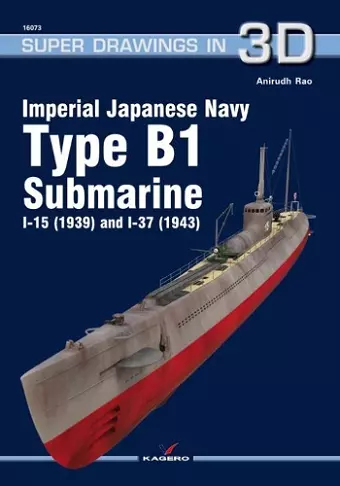Imperial Japanese Navy Type B1 Submarine I-15 (1939) and I-37 (1943)
Format:Paperback
Publisher:Kagero Oficyna Wydawnicza
Published:10th Oct '19
Currently unavailable, our supplier has not provided us a restock date

The construction of large oceanic submarines in the Empire of Japan was related to two basic facts. The first was the achievements in the Atlantic and not only by the German submarines during the First World War. The second one, more important, was the concept of "Decisive battle." For over thirty years – after the Battle of Tsushima – the central strategic concept of the Imperial Navy considered the United States of America as the potential enemy. The Washington Treaty, signed by Japan, limited its capabilities of constructing large warships. Moreover, it favored the construction of warships by the United States and put the Empire of Japan in a disadvantageous tonnage position. As a result, by the end of 1930, General Staff of the Navy developed a new defense policy, tactics, and strategies that were to apply for the following years. In October 1930, General Staff of the Navy presented a plan for the location of the so-called "decisive battle." In the event of a conflict, the Staff assumed that the first move of the Americans would be to direct their fleet towards the Central Pacific. In the vicinity of the Bonin Islands archipelago (Nanpo Shoto), the American fleet will participate in a classic battleship fight, which will settle the fate of both opponents, naturally, in favor of the Japanese ships. According to the plan, the Imperial Navy's ships will set off against them, which will be divided into four main types of combat units. After the Pacific Fleet has sailed out of the base, the first Japanese combat operations will be launched by underwater submarines and will reduce the number of American units sailing towards Japan. Closer to the west, just before the arrival of American ships into the area of the planned battle, the night torpedo attack was to be carried out by the Japanese destroyers. Then, the battleships would enter the fight and defeat the opponent. The presented concept required the approval of financial resources in the budgetary programs, which were necessary for the implementation of the construction works. They were mainly focused on the development of a new type of long-range torpedo, which could be used as the armaments onboard both the submarines and the surface ships.
As with most titles in the series, it contains digital renders portraying the craft with both side and top-view profiles, plus three-quarter views; there are detailed depictions of various aspects in close-up. * Airfix Model World *
ISBN: 9788366148529
Dimensions: unknown
Weight: unknown
64 pages